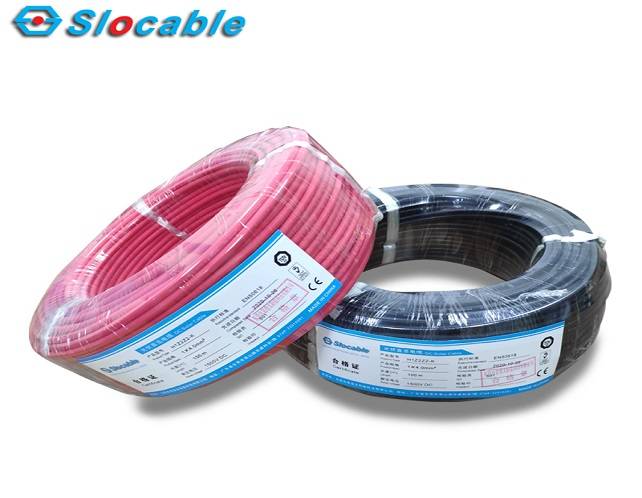Conductor cross-section: photovoltaic cable
Product introduction: Solar energy technology will become one of the future green energy technologies. Solar or photovoltaic (PV) is increasingly used in China. In addition to the rapid development of government-supported photovoltaic power plants, private investors are also actively building factories and planning to put into production Solar modules sold worldwide. But for now, many countries are still in the learning stage. There is no doubt that in order to obtain the best profits, companies in the industry need to learn from countries and companies that have many years of experience in solar energy applications.

The construction of cost-effective and profitable photovoltaic power plants represents the most important goal and core competitiveness of all solar manufacturers. In fact, profitability not only depends on the efficiency or high performance of the solar module itself, but also depends on a series of components that appear to have no direct relationship with the module. But all these components (such as photovoltaic cables, PV connectors, and PV junction boxes) should be selected according to the long-term investment objectives of the tenderer. The high quality of the selected components can prevent the solar system from being profitable due to high repair and maintenance costs.
For example, people usually do not regard the wiring system connecting photovoltaic modules and inverters as a key component. However, if a special cable for solar applications is not used, the service life of the entire system will be affected. In fact, solar systems are often used under harsh environmental conditions, such as high temperatures and ultraviolet radiation. In Europe, a sunny day will cause the on-site temperature of the solar system to reach 100 ° C. At present, the various materials we can use are PVC, rubber, TPE and high-quality cross-link materials, but unfortunately, the rubber cable with a rated temperature of 90 ° C, and even the PVC cable with a rated temperature of 70 ° C It is also often used outdoors. Obviously, this will greatly affect the service life of the system. The production of HUBER + SUHNER solar cable has a history of more than 20 years. The solar equipment using this type of cable in Europe has also been used for more than 20 years and is still in good working condition.
Environmental stress: For photovoltaic applications, materials used outdoors should be based on UV, ozone, severe temperature changes, and chemical attack. The use of low-grade materials under such environmental stress will cause the cable sheath to be fragile and may even decompose the cable insulation. All these situations will directly increase the loss of the cable system, and the risk of short-circuiting of the cable will also increase. In the medium and long term, the possibility of fire or personal injury is also higher.
HUBER + SUHNER RADOX® solar cable is an electron beam cross-link cable with a rated temperature of 120 ° C, which can withstand harsh weather and mechanical shocks in its equipment. According to the international standard IEC216, RADOX® solar cable, in outdoor environments, its service life is 8 times that of rubber cables and 32 times that of PVC cables. These cables and components not only have the best weather resistance, UV resistance and ozone resistance, but also withstand a wider range of temperature changes (for example: from –40 ° C to 125 ° C).
To deal with the potential danger caused by high temperature, manufacturers tend to use double-insulated rubber sheathed cables (for example H07 RNF). However, the standard version of this type of cable is only allowed to be used in environments with a maximum operating temperature of 60 ° C. In Europe, the temperature value that can be measured on the roof is as high as 100 ° C. The rated temperature of RADOX® solar cable is 120 ° C (can be used for 20,000 hours). This rating is equivalent to 18 years of use at a continuous temperature of 90 ° C; when the temperature is below 90 ° C, its service life is longer. Generally, the service life of solar equipment should be more than 20 to 30 years. Based on the above reasons, it is very necessary to use special solar cables and components in the solar system. Resistance to mechanical load In fact, during installation and maintenance, the cable can be routed on the sharp edge of the roof structure, and the cable must withstand pressure, bending, tension, cross-tensile load and strong impact. If the strength of the cable jacket is not sufficient, the cable insulation will be severely damaged, which will affect the service life of the entire cable, or cause problems such as short circuits, fire, and personal injury. The cross-linked material with radiation has high mechanical strength. The cross-linking process changes the chemical structure of the polymer, and fusible thermoplastic materials are converted into non-fusible elastomer materials. Cross-link radiation significantly improves the thermal, mechanical and chemical properties of cable insulation materials. As the world’s largest solar market, Germany has encountered all problems related to cable selection. Today in Germany, more than 50% of equipment uses HUBER + SUHNER RADOX® cables dedicated to solar applications.



 2020-05-09
2020-05-09















